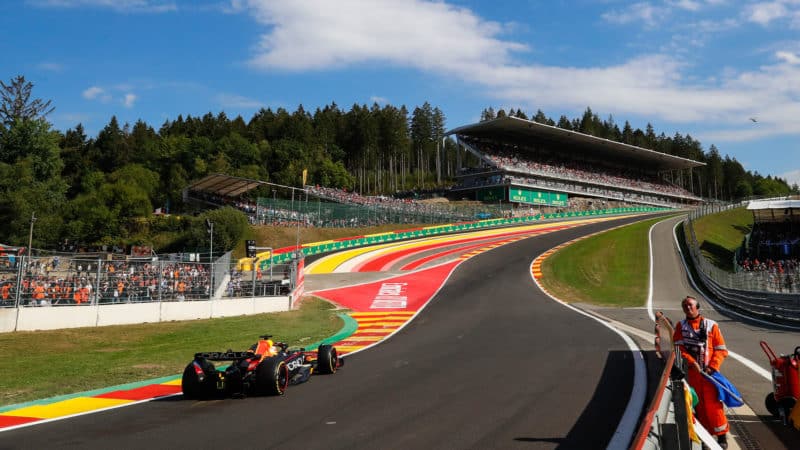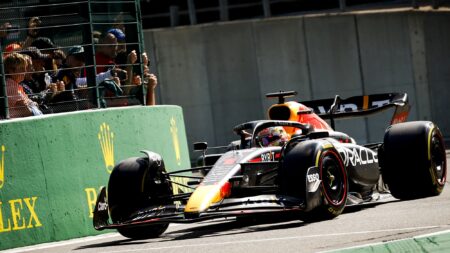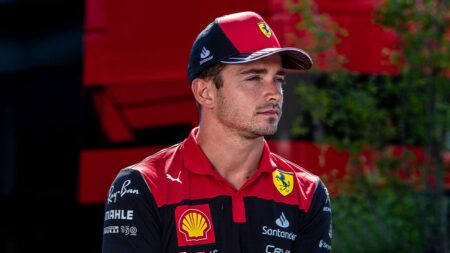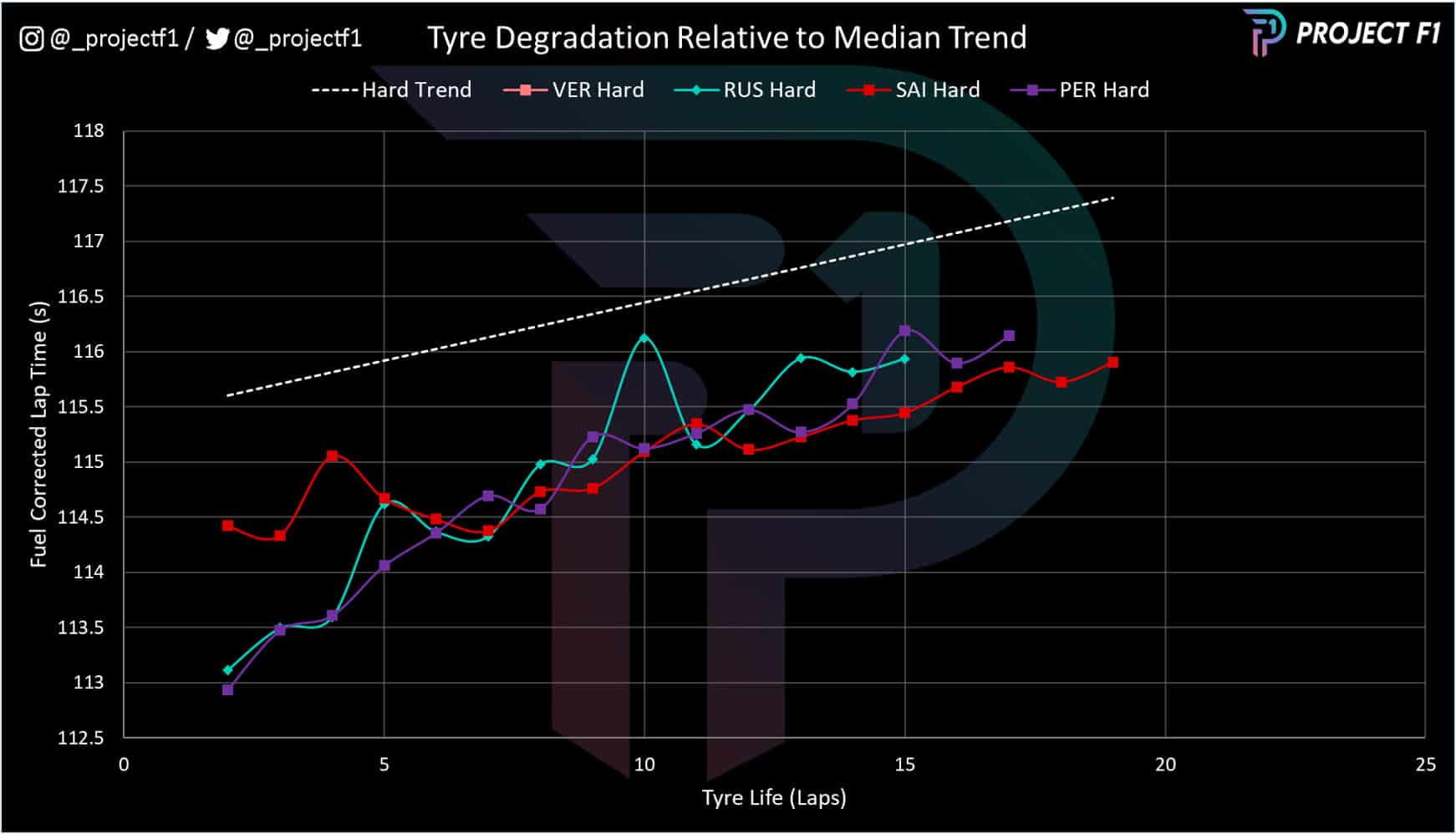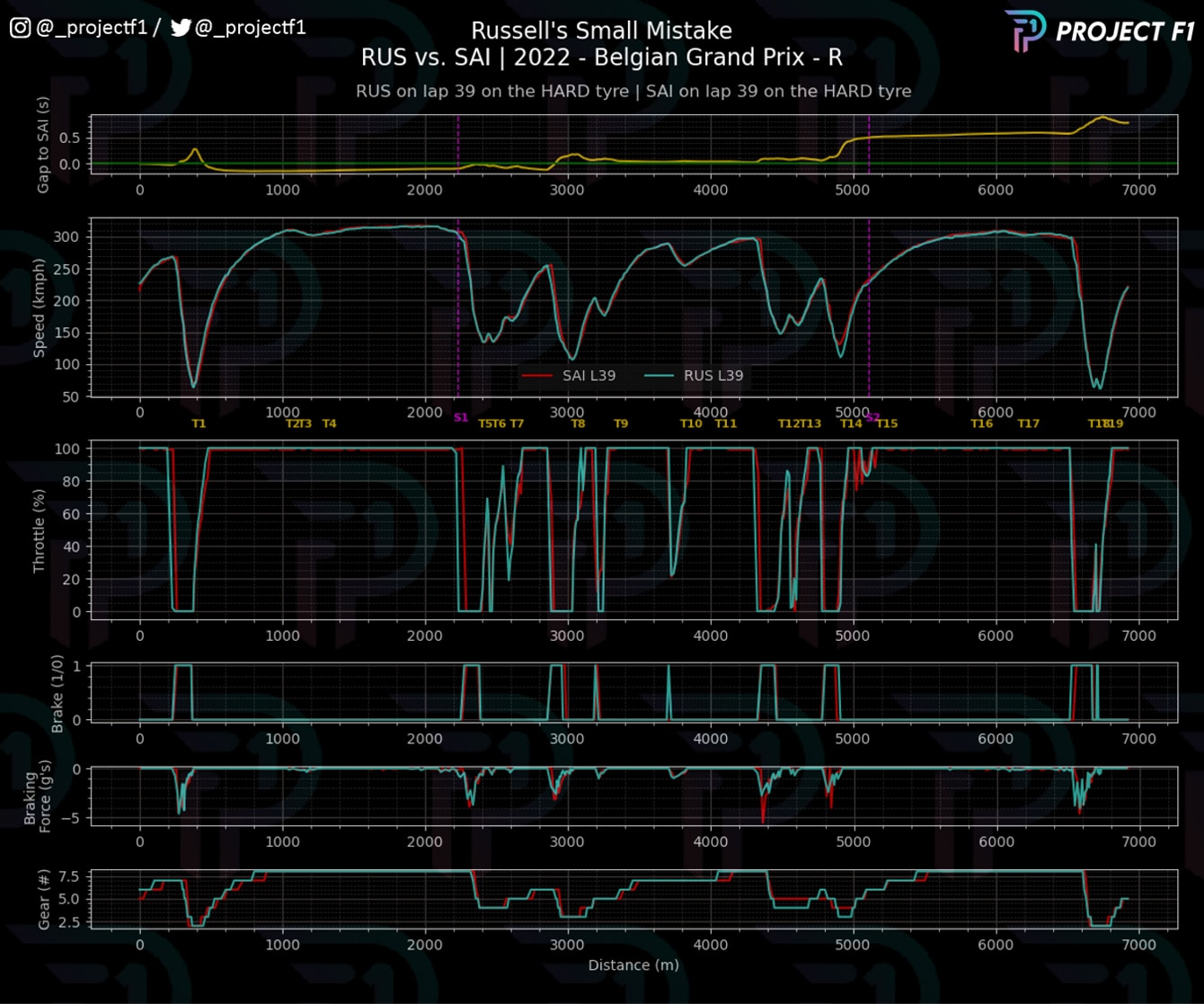As a result, his slewing car was compromised into Turn 1 and he ceded position, leaving Sainz unchallenged at the front, just when the Red Bull’s straightline speed advantage could have been put to great effect.
The loss was temporary, however, as Perez moved back up the order, thanks to the clash between Hamilton and Alonso. The graph shows the frontrunners already pulling out a large gap to Leclerc and Verstappen, even though the championship leader was already up to eighth.
Then came the safety car to reset the race and compress the field. It’s clear how Verstappen moves back into contact with the leaders.
Leclerc’s hopes follow the path of the dotted red line, which dips as he makes a pitstop after a rogue tear-off strip (Verstappen’s no less), became trapped in his brake duct. He’s now in a totally different race to the rest.
The restart
Sainz holds on to his lead from Perez but his pace quickly slows and average lap time drops, as his soft tyres wear faster than expected. In contrast, Verstappen’s average race pace just keeps getting quicker, as he cuts through the field and hits the front on lap 12 after Sainz pits. He would have led a lap sooner if Perez had allowed him through immediately.
From here on, Verstappen was in clean air and able to unleash his true pace. He pitted, then passed Sainz on lap 18 and galloped away from the rest of the field so much so that he had a pitstop gap back to his team-mate, as shown above. A truly dominant performance to take victory in the Belgian Grand Prix.
The gap around the solid purple line of Perez shows just how lonely the final part of his race was, but Sainz had to keep an eye on his rear-view mirrors as Russell made a late charge for the podium.
Verstappen’s dominance
Chart 2 Race pace compared
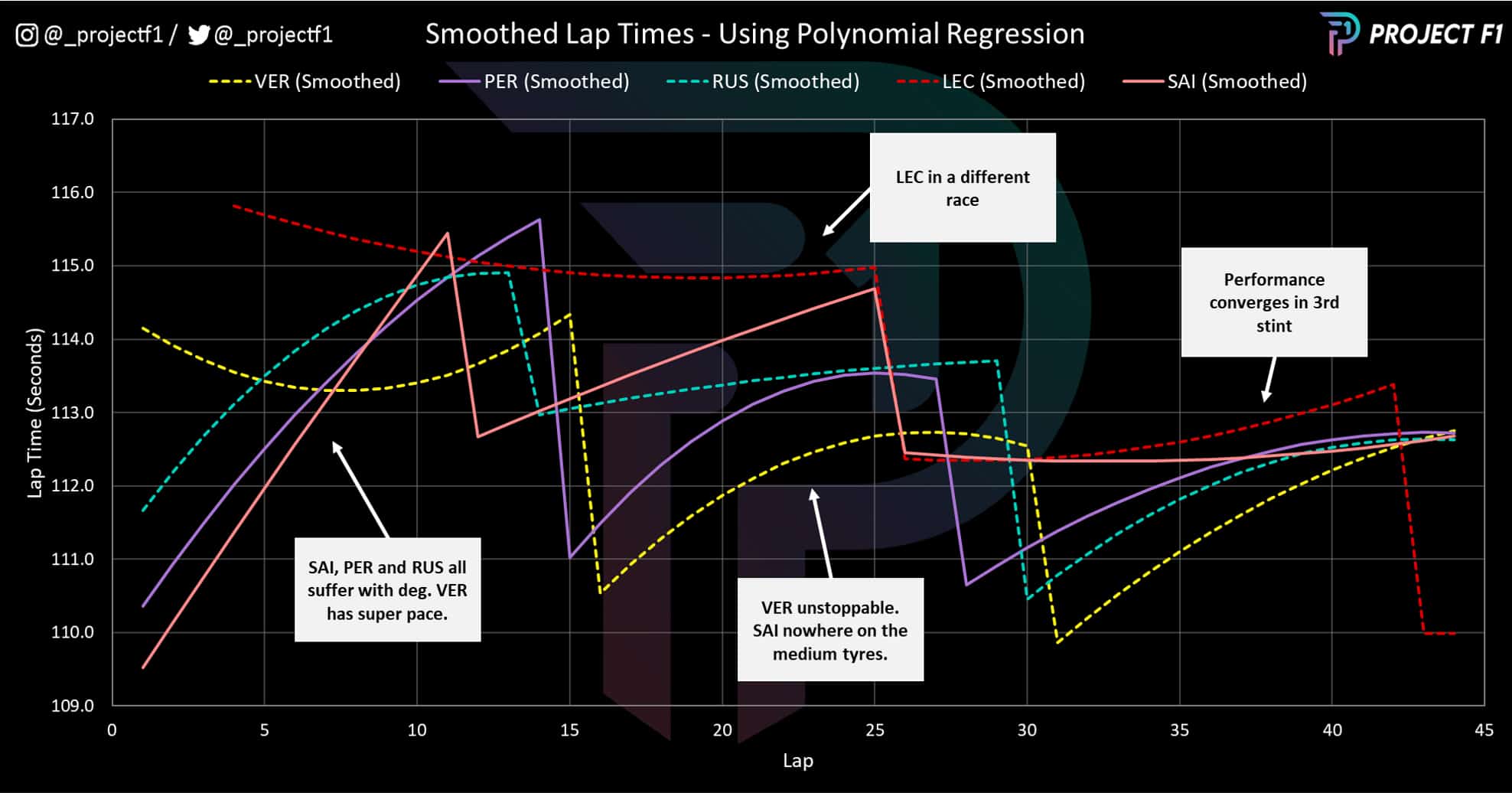
Chart 2 looks at the pace trend of each driver, smoothing out the anomalies to illustrate where drivers were faster and slower during the race. The effect of fresh tyres is clear, as lap times plummet following each driver’s pitstop.
From early on, the sharply-angled lines of Sainz, Perez and Russell illustrate how tyre degradation led to fast-falling lap times, whether they were on soft or medium tyres. In contrast, the gentle curves for Leclerc and Verstappen show them unaffected by excessive wear, and with increasing pace during the opening laps.
That brought Verstappen to the front where his performance was in a league of its own during the second stint: his yellow dotted line is almost a second clear of the solid purple line of Perez in second and he’s followed by Russell who makes up time on Sainz, still dogged by degradation issues.
Verstappen continues his dominance into the third stint, where Russell improves further, as the second fastest driver behind the Red Bull. Sainz’s pace, though slower than Perez, is finally stable, with similar levels of tyre degradation for all drivers.
Although Perez lost ground to Russell in the final stint, he had done enough in the first and second stints to comfortably finish second, while lagging his team-mate for the majority of the race.
Ultimately, Perez finished where he ought to based on his pace, though his starting position of second, compared with Verstappen’s 14th place grid slot, doesn’t suggest a strong performance.
Where it went wrong for Sainz
Chart 3 Sainz’s tyre degradation profile
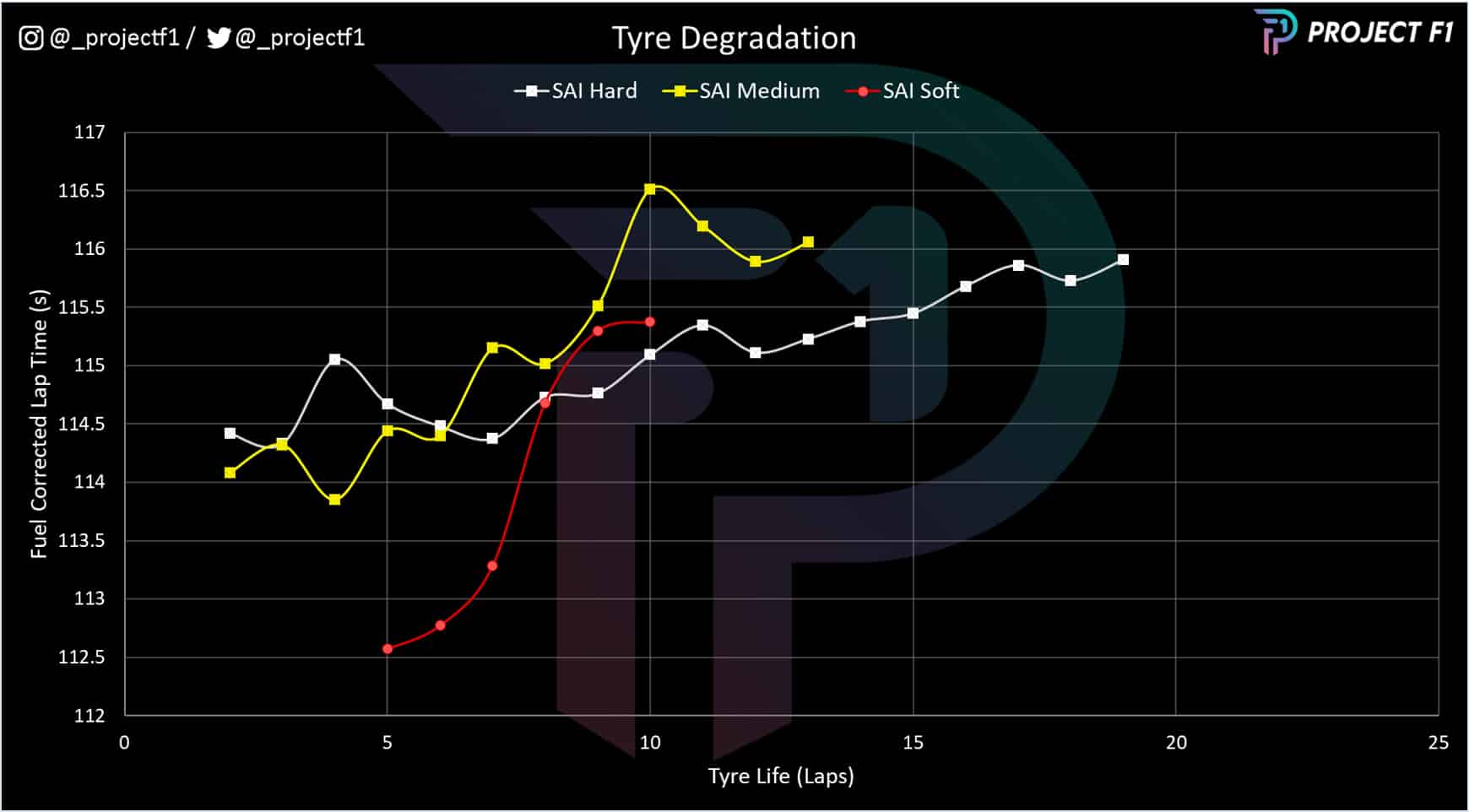
By correcting Sainz’s performance to account for his reducing fuel load, we can better see how tyres limited his pace.
Chart 3 maps his lap time on each of the three sets of tyres he used, with an immediate drop-off on the soft tyre from the safety car restart on lap 5.
